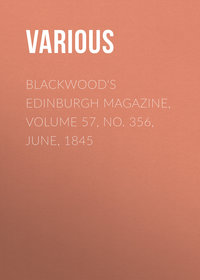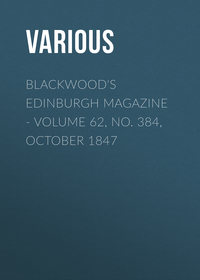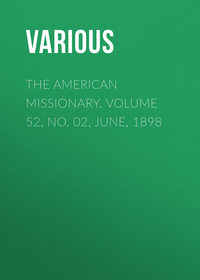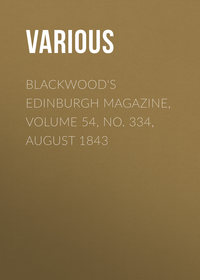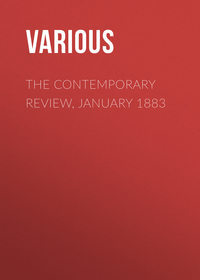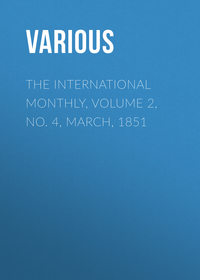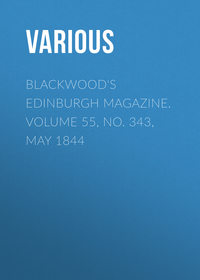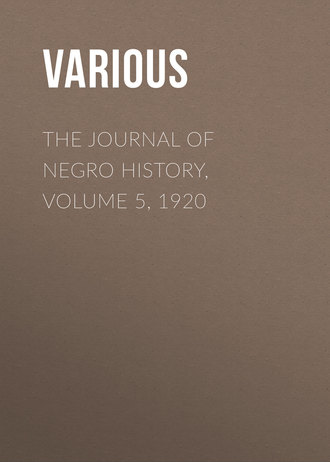 полная версия
полная версияThe Journal of Negro History, Volume 5, 1920
The case in the Court of Common Pleas is reported in Vol. 11. Upper Can., C.P., pp. 1 sqq.
535
Canadian Archives, Sundries U.C., 1807.
It would be unfair to the United States to say or suggest that all the flights for freedom were in the one direction. Very early trouble was experienced by Canadian owners of slaves from their running away to the United States. The following letter tells its own story. D.M. Erskine the British representative writing from New York, May 26, 1807, to Francis Gore, Lieutenant Governor of Upper Canada, says:
"I have the honour to acknowledge the receipt of your letter of the 24th ult enclosing a Memorial presented to you by the Proprietors of Slaves in the Western District of the Province of Upper Canada.
"I regret equally with yourself the Inconvenience which His Majesty's subjects in Upper Canada experience from the Desertion of their slaves into the Territory of the United States, and of Persons bound to them for a term of years, as also of his Majesty's soldiers and sailors; but I fear no Representation to the Government of the United States will at present avail in checking the evils complained of, as I have frequently of late had occasion to apply to them for the Surrender of various Deserters under different circumstances and always without success.
"The answer that has been usually given, has been, 'That the Treaty between Great Britain & the United States which alone gave them the Power to surrender Deserters having expired, it was impossible for them to exercise such an authority without the Sanction of the Laws.'
"I will however forward to His Majesty's Minister for Foreign Affairs the Memorial above mentioned in the Hope that some arrangements may be entered into to obviate in future the great Losses which are therein described."
In the Life and Adventures of Wilson Benson, written by himself (Toronto, 1876), is found the following, pp. 34-36:
"In 1849 I shipped on the schooner Rose of Milton, Capt. Hamilton, cruising on Lakes Ontario and Erie. In one trip to the town of Erie, Pennsylvania, for a cargo of coal, while lying at the dock, a diminutive negro man, with a white beard, came on board the vessel, and inquiried of me if this was a British vessel. On being informed that it was, he desired to be secreted, stating that he was a runaway slave, and that his pursuers were on his track. I at once secreted him in a closet which served as a store-room for vegetables, &c., and as we were almost ready to set sail, I did not discover his presence to either Captain or crew until we were some distance out on the lake. When he appeared, Capt. Hamilton inquired of me where I had obtained 'that child,' and on being informed, expressed some anxiety, as we were liable to be captured had we been followed by a steamer. As it was, he merely looked up at the rigging, and exclaimed, 'Blow, breezes, blow!' The negro, who knew no other name than 'Sambo' we brought to Toronto. On one occasion, when I offered him some molasses, he shook his head and made grimaces expressive of disgust. He informed me that the slaves employed on the sugar plantations, when beaten by their masters, in order to obtain an indirect revenge, spat in the syrup, and committed other filthy things as an imaginary punishment upon the whites. I frequently saw Sambo in Toronto, and many times he expressed thankfulness to me for his deliverance. I may here mention that shortly after the arrival of Sambo on board the Rose of Milton at Erie, two suspicious-looking men, dressed in plain clothes, came aboard and paced up and down the deck several times, and as all the crew were absent at the time, I felt some apprehenson for the safety of the poor fugitive; but seeing nothing of a suspicious appearance, and the almost entire absence of the crew, they sauntered away. I made several other trips up and down the lakes during that summer on the same vessel."
536
So far at all events as appears from any records that I have seen it is just possible however that "La Liberté, le neigre" mentioned in de Meulles' Census of Acadia in 1696 was a black slave, notwithstanding his name.
537
From 1720 on, Annapolis Royal had a fairly firm government and settlement but it was not until Halifax was founded that it became certain that the country would remain English.
538
This and most of the facts, dates, etc., in this chapter are taken from the Rev. Dr. T. Watson Smith's fascinating article The Slave in Canada in the Nova Scotia Historical Society's Collections, Vol. X, Halifax, 1899.
539
(1762) 2 George III, c. 1 (N. S.), Statutes at Large, Nova Scotia, Halifax, 1805, p. 77.
540
It is referred to in a letter from Ward Chipman to Chief Justice Blowers to be mentioned later. See post, p.
541
This Act was continued in 1784 by (1784) 24 George III, c. 14 (N. S.). Statutes at Large, Nova Scotia, p. 238.
542
"Halifax currency" was at this time nine-tenths of Sterling £10 currency = £9 sterling and the 5/ dollar being 4/6 sterling.
543
It will be remembered that in the Treaty of Peace it was agreed by Article VII "His Britanic Majesty shall with all convenient speed and without causing any destruction or carrying away any negroes or other property of the American inhabitants withdraw his armies, garrisons and fleets from the said United States...."
Sir Guy Carleton claimed that the Negroes who had taken refuge in the British lines at once lost their status of slavery and became free. They were "not Negroes or other property of the American," a rather technical not to say finely drawn distinction but in favorem libertatis; and in any event Britain would not betray the helpless who had put their faith in her.
544
Washington did make a claim; but the United States had not carried out its part of the contract and Britain would not and never did pay. Jones' Loyalist History of New York, Vol. 2. p. 256, says that the number of Negroes who found shelter in the British lines was 2000 at least; probably this is an underestimate. Hay's Historical Reading at p. 249 gives the number of Negroes who came into Nova Scotia with their Masters at least 3000—and of free Negroes 1522 at Shelburne, 182 at St. John River. 270 at Guysborough, 211 in Annapolis County, and a smaller number at other places. 1200 were sent to Sierre Leone in 1792.
545
See ante, p. —. The Negro population in 1784 estimated at about 3000 was included in the 28,347 of Disbanded Troops and Loyalists called New Inhabitants, Can. Arch., Report for 1885, p. 10. There were some free Negroes in various companies of the British forces in one capacity or another.
546
The Negroes sent were Abraham, James, Lymas, Cyrus, John, Isaac, Quako, January, Priscella, Rachel, Venus, Daphne, Ann, Dorothy and four children Celia, William, Venus, Eleanora—reserving Matthew and Susannah at home. All these had been christened, February 11, 1784. "Isaac is a thorough good carpenter and master sawyer, perfectly capable of overseeing and conducting the rest and strictly honest; Lymas is a rough carpenter and sawyer; Quako is a field negro has met with an accident in his arm which will require some indulgence. The other men are sawyers and John also a good axeman. Abraham has been used to cattle and to attend in the house, &c. All the men are expert in boats. The women are stout and able and promise well to increase their numbers. Venus is useful in the hospital, poultry yard, gardens, etc. Upon the whole they are a most useful lot of Negroes."
John Wentworth, last Royalist Governor of New Hampshire and afterwards Sir John Wentworth, Lieutenant Governor of Nova Scotia, doubtless believed himself to be a good man and a good Christian.
The story of Eve and Suke infra is told by Archdeacon Raymond, 3 N. B. Mag., 1899, p. 221.
547
He went to England in 1796 (it was said, for a visit) resigned his position in Nova Scotia, was Knighted and appointed Recorder of Fort St. George, Bombay, India.
548
A collateral ancestor of my own, the Reverend Archibald Riddell, had the advantage of a similar proceeding a century before. Being apprehended for taking part in the uprising of the Covenanters in Scotland he was given (or sold) with others to a Scottish Laird who chartered a vessel and proceeded to take his human chattels to America for sale. The plague broke out on the ship, the Laird and his wife died of it as did some of the crew. When the ship reached New Jersey, there being no master, the "slaves" escaped up country. The Laird's son-in-law and personal representative came to America and claimed Riddell and others. The governor called a jury to determine whether they were slaves and the jury promptly found in their favor. Riddell preached in New Jersey until the Revolution of 1688 made it safe for him to return to Scotland. Juries in such cases are liable to what Blackstone calls "pious perjury." All this practice was based upon the common law proceedings when a claim was made of villenage. When a person claimed to be the lord of a villein who had run away and remained outside the manor unto which he was regardant, he sued out a writ of neif, that is, de nativo habendo. The sheriff took the writ and if the nativus admitted that he was villein to the lord who claimed him, he was delivered by the sheriff to the lord of the manor; but if he claimed to be free, the sheriff should not seize him but the Lord was compelled to take out a Pone to have the matter tried before the Court of Common Pleas or the Justices in Eyre, that is, the assizes. Or the alleged villein might himself sue out a writ of libertate probanda: and until trial of the case the lord could not seize the alleged villein. The curious will find the whole subject dealt with in Fitzherbert's Natura Brevium, pp. 77 sqq.
549
This is very much like the Chloe Cooley case in Upper Canada. I do not know what form the prosecution could possibly take if the Negro was in fact a slave. See Chapter V, note 5 ante.
550
It is said that August 1797 was the date of the last public slave sale at Montreal, that of Emmanuel Allen for £36.
The last advertisement for sale by auction of a slave in the Maritime Provinces seems to be that in The Royal Gazette and Nova Scotia Advertiser of September 7, 1790, where William Millet of Halifax offers for sale by auction September 9 "A stout likely negro man and sundry other articles."
In 1802 the census showed that there were 451 Blacks in Halifax; in 1791 there were 422.
Dr. T. Watson Smith says in a paper "Slavery in Canada" republished in "Canadian History," No. 12, December, 1900, at p. 321.
"About 1806, so Judge Marshall has stated, a master and his slave were taken before Chief Justice Blowers on a writ of habeas corpus. When the case and the question of slavery in general had been pretty well argued on each side, the Chief Justice decided that slavery had no legal place in Nova Scotia."
I have not been able to trace such a decision and cannot think that it has been correctly reported. Dr. Smith is wholly justified in his statement "there is good ground for the opinion that this baneful system was never actually abolished in the present Canadian Provinces until the vote of the British Parliament and the signature of King William IV in 1833 rendered it illegal throughout the British Empire."
551
J. Allen Jack, Q. C., D. C., L., of St. John, New Brunswick, gives a full account of this case from which (and similar sources) most of the facts are taken. In a paper read before the Royal Society of Canada May 26, 1898, Trans. R. S. Can., 1898, pp. 137 sqq., Dr. Jack conjectures that Nancy Morton is the Negro female slave conveyed by bill of sale registered in the office of the Register of Deeds, St. John's, N. B. Slaves were treated as realty as regards fieri facias under the Act of 1732 (see ante, p. —) and at least "savoured of the realty." The bill of sale registered January 31, 1791, was dated November 13, 1778, and was executed by John Johnson of the Township of Brooklyn in King's County, Long Island, Province of New York. It conveyed with a covenant to warrant and defend title to Samuel Duffy, Innkeeper for £40 currency (say $100) "a certain negro female about fourteen years of age and goes by the name of Nancy," pp. 141, 142. However that may be, Stair Agnew bought Nancy from William Bailey of the County of York in the Province of New Brunswick for £40 with full warranty of title as a slave.
552
He was born in Boston in 1753, the son of John Chipman, a member of the Bar. Graduating at Harvard, he joined the Boston Bar and practised in that City until 1776. After the Peace he went to England and in 1784 sailed for New Brunswick of which he was appointed Solicitor General. After a quarter of a century of successful practice he was appointed 1808 a puisne judge of the Supreme Court. He died in February, 1826.
His services to Nancy Morton were given without fee or hope of reward.
553
That of Mr. Chipman is given in Trans. R. Soc. Can., 1898, pp. 155-184.
554
It will be seen that the return sets up that Jones bought and owned the slave and the case was argued on that hypothesis, but the historians say that Captain Stair Agnew was the owner. The point is not of importance.
555
Mos regit legem, Mos pro lege, Leges moribus servient, Consuetudo est optimus interpres legum, custom is the life of the law, custom becomes law, &c., &c. That slavery was necessary and therefore legal in the American Colonies was admitted in the Somerset case.
556
The modern lawyer, in my opinion, would find no difficulty in coming to the same conclusion as the Chief Justice.
Mr. Chipman in his interesting correspondence with Chief Justice Blowers (Trans. R. Soc. Can., 1898, pp. 148 sqq.) admits that if his opponents had hit upon the Nova Scotia Statute of 1762 as revised in 1783 "the conclusiveness of their reasoning on their principles would have been considered as demonstrated." He adds: "In searching your laws upon this occasion I found this clause but carefully avoided mentioning it," which raises a curious question in legal ethics.
557
The reconveyance to Bailey, a quit claim deed, is witnessed by George Leonard and Thomas Wetmore and is dated February 22, 1800. The indenture by which Nancy bound herself for fifteen years is dated February 23, 1800.
If Dr. Jack is right in his conjecture the argument took place when she was 36 and she would receive her freedom when she was 51. Agnew challenged Judge Allen for some reflection upon him by the Judge; the challenge was declined and Agnew then challenged Street who accepted—and they fought a bloodless duel. Street later in 1821 fought a duel with George Ludlow Wetmore over words which passed on leaving the Court. Wetmore was struck in the head and died in a few hours. Street was tried and aquitted. One result of this case was that Mr. Justice Upham freed his slaves. His wife had six inherited from her father and he himself had some, one a girl born in the East Indies whom he had bought from her master in New York, the master of a ship, afterwards married a soldier in Colonel Allen's regiment.
558
What is believed to be the last advertisement for the sale of a slave in any maritime province is in the New Brunswick Royal Gazette of October 16, 1809 when Daniel Brown offered for sale Nancy a Negro woman, guaranteeing a good title. The latest offer of a reward for the apprehension of a runaway slave is said to be in the same paper for July 10, 1816.
559
For this act the perpetrator was excluded by his masonic lodge; being brought to trial before the Supreme Court in August 1792 he was "honourably acquitted" and afterwards he was reinstated by his lodge.
560
Seldom mentioned and never much boasted of in the United States.
561
The word Camouflage may be new. The practice antedated humanity.
562
There is a record of 371 arriving at St. John from Halifax on May 25, 1815, by the Romulus, who had taken refuge on board the British Men of War in the Chesapeake. The Negro settlement at Loch Lomond was founded by them.
At the Census of 1824, 1421 "persons of color" were found in New Brunswick. The Very Rev. Archdeacon Raymond, an excellent authority, thinks most of these "were at one time slaves or the children of slaves," but many were not slaves in New Brunswick.
Those that were brought by Admiral Cochrane to Halifax became a great burden to the community. It was proposed in 1815 by the British Government to remove them to a warmer climate, but this scheme does not seem to have been carried out. By a census taken in 1816 there was found to be 684 in Halifax and elsewhere in Nova Scotia. In the winter of 1814-15 they had suffered rather severely from small pox and were vaccinated to prevent its spread. Some were placed on Melville Island.
563
Presumably because he had the greatest number of serfs in the world and was, therefore, the best judge of slaves.
564
Of course, Britain refused to give up a single fugitive. She could not betray a trust even of the humblest. She knew that in "the land of the free and the home of the brave" for the Negro returned to his master, to be brave was to incur torture and death and death alone could make him free.
565
The Act (1833) 3, 4 William III, c. 73 (Imp.), passed the House of Commons August 7 and received the Royal Assent August 28, 1833; and there were no slaves in all the British world after August, 1838.
566
I had with the late Hon. Warwick Hough of St. Louis, Missouri, who had been an officer in the Southern Army, several conversations on the subject of slavery. He gave it as his firm conviction that, had the South succeeded in the Civil War, it would shortly have itself abolished slavery and sought readmission to the Union. His proposition was that the power and influence of the planter class was waning, while the manufacturers, merchants and the like were increasing in number and influence and they would have for their own protection abolished slavery. I have not met a Northerner or a Canadian who agreed with this view; but a few Southerners have expressed to me their general concurrence with my friend's proposition.
567
This dissertation is the result of the researches of Mr. A. G. Lindsay under Dr. C. G. Woodson at Howard University during the academic year 1919-1920 and was submitted to the Committee on Graduate Studies in candidacy for the degree of Master of Arts. Dr. C. G. Woodson was the chairman of this committee.
The following sources were used in the preparation of this manuscript: American State Papers, Foreign Relations; American State Papers, Confidential Documents; American State Papers, Wait's Edition; Annals of Congress; Diary of John Quincy Adams, in his Memoirs; Diplomatic Correspondence; Force, American Archives; Journals of Congress; Journals of Continental Congress; McDonald's Source Book of American History; Niles Register; Treaties and Conventions, Edition 1889; United States Statutes at Large.
The following works were also consulted: John Adams, Works; Van Tyne, The American Revolution; American Historical Association Reports; Babcock, Rise of American Nationality; Benton, Naval History of England; Channing, History of the United States; Ford, Washington's Writings; Ford, Jefferson's Writings; Fiske, Critical Period; Gibb, Administrations of Washington and Adams; The Journal of Negro History; Morse, John Adams; Naval Chronicle of England; Ramsay, History of South Carolina, Edition, 1809; Sparks, Washington; Moore, International Arbitration; Moore, Digest of International Law; Wharton, Digest of International Law, Edition, 1887; Halleck, Elements of Law; Wheaton, Elements of Law, Edition, by Dana.
568
Ramsay, History of South Carolina, Edition, 1809, Vol. I, pp. 474-475.
569
American Historical Association, Vol. I, p. 273. F. A. Ogg, American State Papers, Vol. IV, p. 304.
570
Moore, International Arbitrations, p. 350.
571
Van Tyne, American Revolution, p. 61; Force, American Archives, 4th Series, III, 1385.
572
Proclamation—"Whereas the enemy have adopted a practice of enrolling Negroes among their troops, I do hereby give Notice that all Negroes taken in Arms or upon any military Duty shall be purchased for the public service at a stated price; the money to be paid to the captors. But I do most strictly forbid any Person to sell or claim right over any Negroes the property of a Rebel who may take refuge with any part of this Army. And I do promise to every Negro who shall desert the Rebel Standard full Security to follow within the Lines any occupation which he may think proper." Given under my Hand at Headquarters, Phillipsburg, the 30th day of June, 1799.
H. Clinton.By his Excellency's Commander
John Smith, Sec.
Journal of Continental Congress, II, 26; Van Tyne, American Revolution.
573
Force, American Archives, I, 486, Fifth Series.
574
Journal of Continental Congress, II, 26.
575
Ramsay, History of South Carolina, Edition, 1809, I, 474.
576
Moore's Historical Notes, 14; Journal of Negro History, Vol. I, p. 117.
577
Jefferson's Works, Vol. II, p. 426.
578
Sparks, Washington's Works, III, 218.
579
Channing's History of the United States, Vol. III, pp. 348-369.
580
American Historical Association Report, Vol. I, p. 273.
581
Article 7, Treaty of Paris.—"There shall be a firm and perpetual peace between his Brittanic Majesty and the said States, and between the subjects of the one and the citizens of the other, wherefore all hostilities both by sea and land shall from henceforth cease: All prisoners on both sides shall be set at liberty, and his Brittanic Majesty shall with all convenient speed, and without causing any destruction or carrying away any Negroes or other property of the American inhabitants, withdraw all his armies, garrisons and fleets from the said United States, and from every port, place and harbour within the same; leaving in all fortifications the American artillery that may be therein; and shall also order and cause all archives, records, deeds and papers belonging to any of the said states or their citizens which in the course of the war may have fallen into the hands of his officers to be forthwith restored and delivered to the proper states and persons to whom they belong."
McDonald, Documentary Source Book of American History, p. 208.
582
American Historical Association Report, 1874, p. 421. Waits, American State Papers, Vol. I, p. 279.




